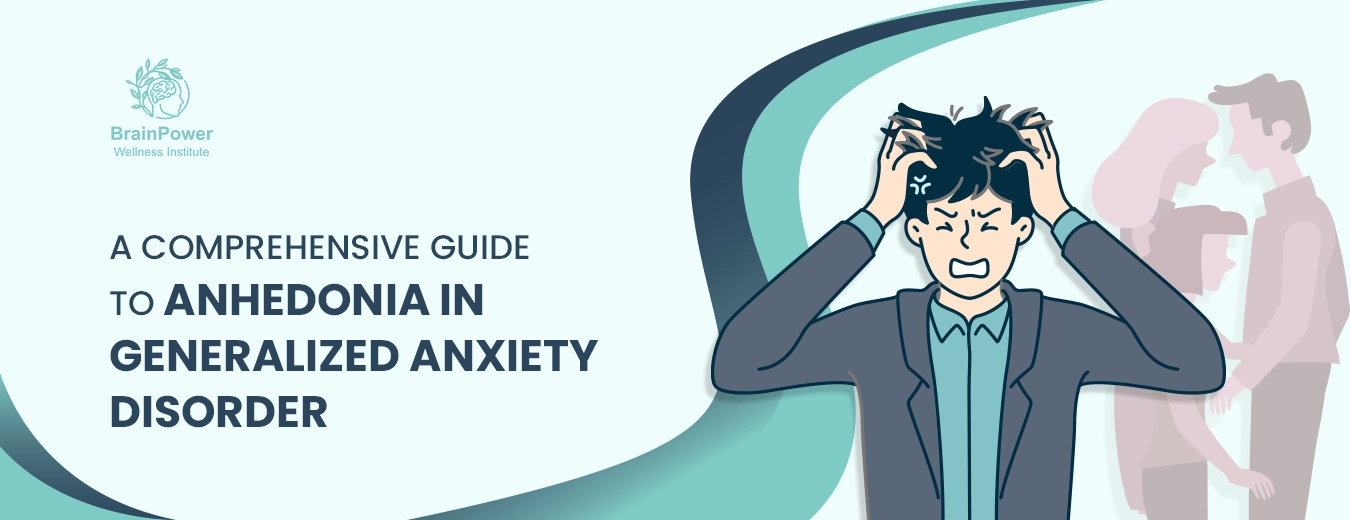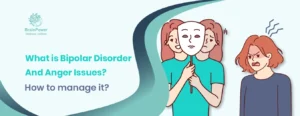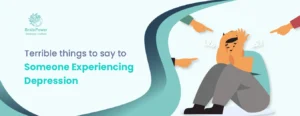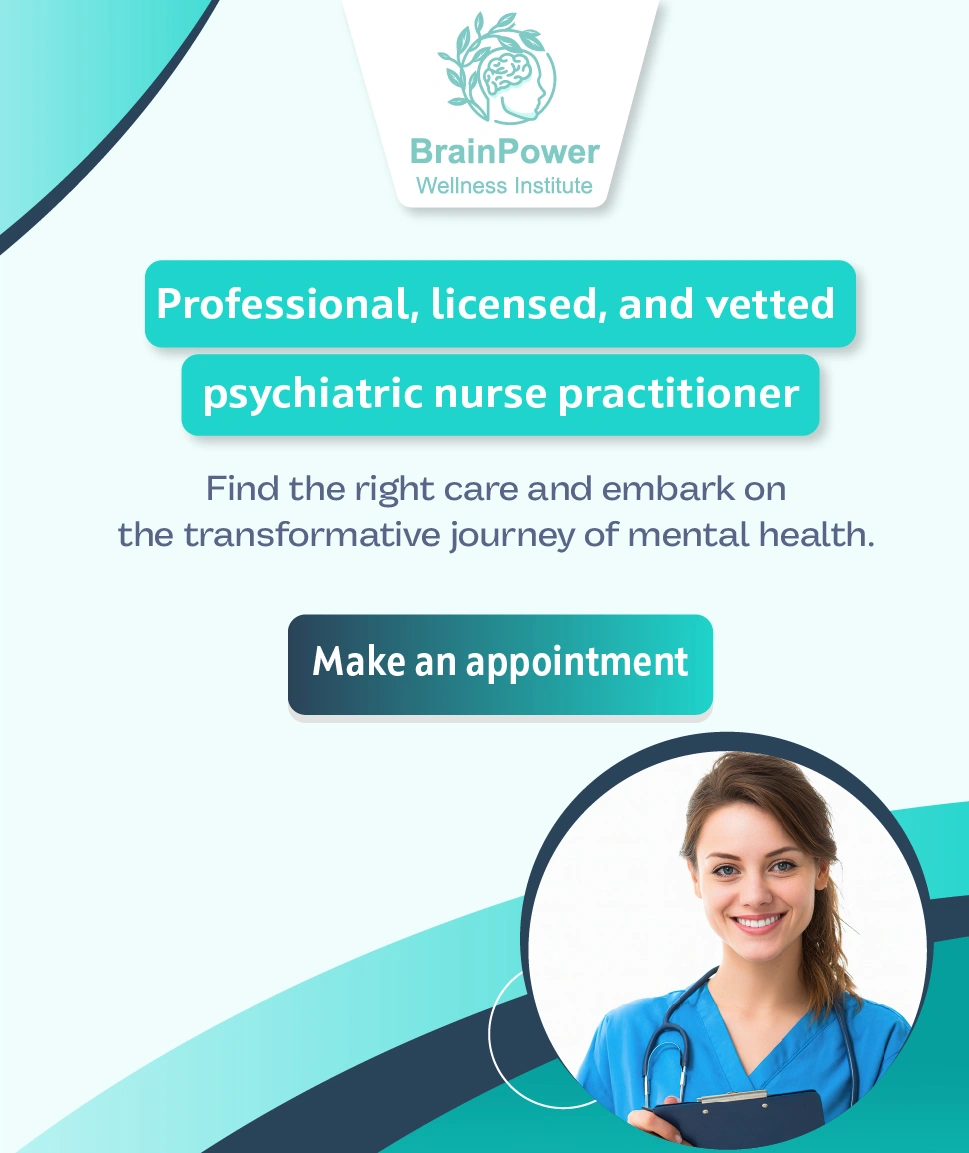Do you feel little or no enjoyment in those things or activities that once made you happy? Do you get easily bored while completing tasks and prefer to do nothing? There is a greater possibility that you are having Anhedonia. Anhedonia is the diminished ability to experience pleasure that is most common in depression and some other mental issues. Read this article if you want to know more about Anhedonia in generalized anxiety disorder. You will also find the common symptoms, causes, treatment, and other positive ways to transform your negative mood into a positive one so you can cherish your life.
Anhedonia in Generalized anxiety disorder
“Anhedonia in Generalized anxiety disorder refers to the loss of ability to feel joy or happiness or lack of interest in those things that were used to bring a smile to the face. This condition usually occurs when the anxiety gets worse and transforms into depression. Moreover, individuals feel emotional emptiness that urges them to keep a distance from others. However, individuals can recover from this condition with the help of effective therapeutic options, which include therapy, medications, and lifestyle alterations”.
Anhedonia is a common symptom of Generalized anxiety disorder. In this condition, individuals do not feel pleasure and remain in a persistent stress condition. They do not feel any interest in those activities that were once enjoyable for them. The hobbies, which were their main source of happiness, became boring for them. This is due to their ongoing anxiety. However, multiple trigger factors can result in the onset of Anhedonia. Depression is a severe form of anxiety in which individuals do not have control over their thoughts and emotions and have a lack of interest in previously enjoyed activities.
Furthermore, various recent studies have also reported that Anhedonia is also linked with major depressive disorder. Moreover, approximately 70% of people suffering from depression experience anhedonia. Likewise, some studies have clearly mentioned that about 15% to 38% of people dealing with generalized anxiety disorder do not feel interest or pleasure even in enjoyable activities. However, the severity of Anhedonia varies for each individual.
How does Anhedonia in Generalized anxiety disorder occur?
There is a strong but complex link between Anhedonia and general anxiety disorder. Anxiety can directly lead to the development in the following ways:
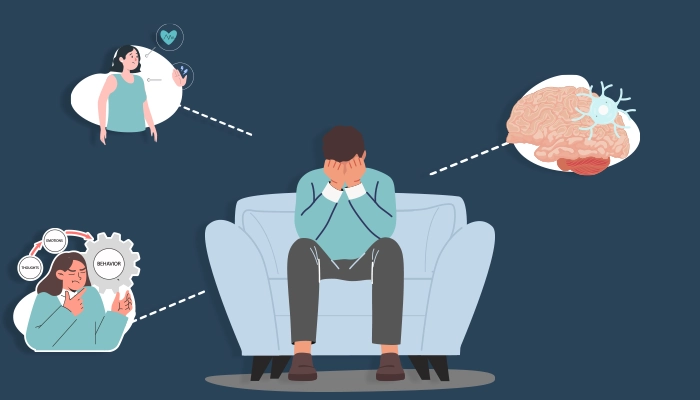
1. Neurobiological mechanisms
The brain is the primary organ that generates this inability to feel pleasure or happiness. There is a reward system in the brain. Specific disruptions occur in this reward system, which results in decreased sensitivity to rewards and, ultimately, the development of Anhedonia in generalized anxiety disorder.
If the anxiety symptoms are from a more extended time period, then it directly affects the hypothalamic-pituitary-adrenal (HPA) axis. The negative effect on this region results in the instability of some specific neurotransmitters, which then cause the state of Anhedonia.
2. Physiological responses
The continuous arousal state in generalized anxiety disorder affects the body’s ability to relax. Therefore, most people do not enjoy their activities and feel fatigued or tired.
Some physical symptoms also appear, which also develop the sensations of Anhedonia, such as:
- Increased heart rate
- Difficulty in breathing
- Muscle tension or stiffness
3. Cognitive-behavioral factors
The prolonged mental stress directly targets cognitive abilities and becomes a reason for cognitive exhaustion and, ultimately, the state of Anhedonia.
Individuals suffering from generalized anxiety disorder also exhibit avoidance behaviors. This limits the individuals from getting exposed to any potential rewarding experience, and therefore, they do not feel pleasure or happiness.
4. Environmental factors
Multiple environmental factors also contribute to the development of Anhedonia in generalized anxiety disorder, which includes:
- Societal pressure
- Social isolation
- Chronic stress
- Substance abuse
What are the symptoms of Anhedonia in GAD?
Although Anhedonia is itself a symptom of generalized anxiety disorder, affected individuals also experience some associated symptoms, which indicate that the individual needs professional help.
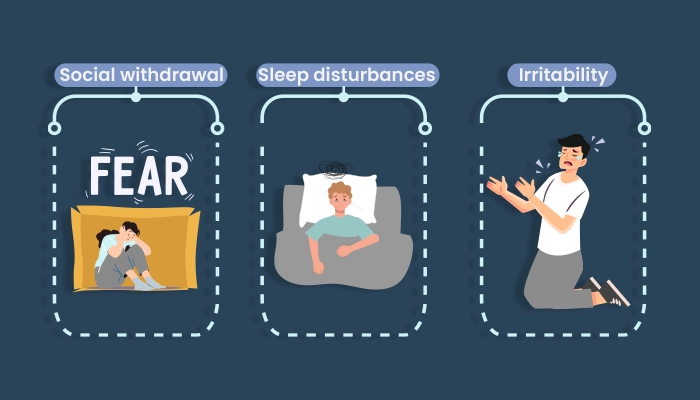
Common symptoms of Anhedonia
- Lack of interest
- Negative emotions
- Emotional instability
- Low mood
- Reduced energy levels
- Lack of focus or concentration
- Social isolation
- Reduced sex drive
What are the types of Anhedonia in GAD?
The types of Anhedonia depend on the mental state of the individual and which aspect of the individual’s life is affected. The two most common types of Anhedonia are as follows:
1. Physical Anhedonia
Physical anhedonia individuals do not feel pleasure in sensory signals or experiences like smell, taste, sound, and touch. They think they can not get happiness from anything and usually avoid doing new things.
2. Social Anhedonia
Social anhedonia involves the lack of pleasure in social interaction or exposure. Individuals prefer to stay alone when they meet new people; they do not feel any joy or comfort. Moreover, they feel that they will only waste their time spending with others. They think that they can only do constructive things in isolation.
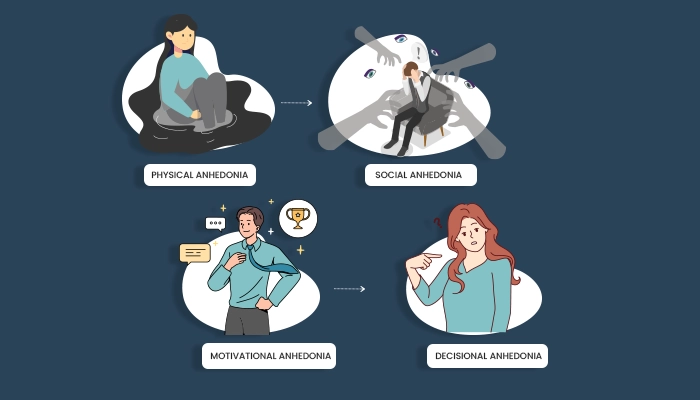
3. Motivational Anhedonia
In this type of Anhedonia, individuals do not enjoy participating in rewarding activities. Therefore, they do not consistently achieve their life goals and remain demotivated.
4. Decisional Anhedonia
As the name indicates, decisional Anhedonia involves the inability to make valuable decisions in life. They do not understand which activities are worth pursuing.
Anhedonia in Men VS Women
| Aspect | Men | Women |
|---|---|---|
| Rate of prevalence | The prevalence rate of Anhedonia in men is low | Women usually exhibit a higher rate of prevalence of Anhedonia in GAD |
| Disability | Men have reduced levels of disability due to Anhedonia in GAD | Women have higher levels of disability as compared to men |
| Family history | Less association with a family history of depression | Higher association with a family history of depression |
| Strength of anxiousness | Adolescence is marked by stable levels of anxiety | Increased levels of anxiety from the middle to late adolescent stages |
Diagnosis of Anhedonia
Professional mental health experts diagnose the symptoms of Anhedonia in generalized anxiety disorder. The person can be appropriately diagnosed with Anhedonia if the symptoms of depression are persistent for two weeks or more. Experts not only perform psychological evaluations but also employ multiple diagnostic tools for the complete diagnosis of Anhedonia in generalized anxiety disorder.
Impact of Anhedonia on Life Functioning
Anhedonia is an underrecognized symptom of general anxiety disorder. But it can negatively affect the life functioning of individuals in multiple ways:
1. Social withdrawal
Individuals dealing with Anhedonia do not find any pleasure or peace in social activities. Therefore, they prefer to stay alone instead of interacting in any social setting and do not feel pleasure listening to or sharing their thoughts and emotions with others. This restricts their ability to make social connections.
2. Cognitive and emotional fatigue
Mental exhaustion is directly connected to emotional exhaustion. An individual who exhibits hypervigilant behavior and develops distressing thoughts prefer to stay away from their loved ones due to emotional detachment. Even when they are in a conversation with their loved ones, their emotional numbness is common.
3. Reduced interest in leisure activities
Individuals with Anhedonia in generalized anxiety disorder also feel reduced enjoyment in hobbies and all those activities that were once a source of joy for them. Instead of spending quality time in constructive activities, their mind remains in stressful scenarios. Their isolated behavior further increases the severity of the condition.
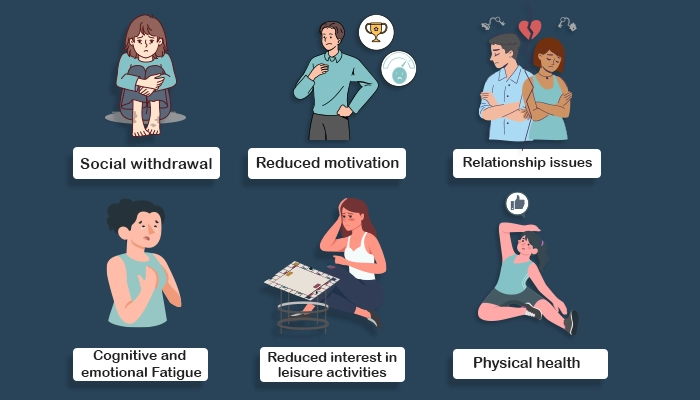
4. Reduced motivation
Individuals do not feel any passion to work hard and achieve their goals. They do not feel pleasure in their achievements. Therefore, their academic and professional performance is affected. They do not listen to instructions or follow the following when they are in a meeting. Ultimately, the rate of productivity decreases.
5. Relationship issues
Due to Anhedonia in generalized anxiety disorder, individuals do not feel pleasure in intimate relationships. Therefore, they do not satisfy their partners and face multiple issues due to reduced sex drive. Moreover, due to Anhedonia in generalized anxiety disorder, they fail to communicate with their partners and feel disconnected effectively.
6. Physical health
Anhedonia can also negatively affect physical health. Affected individuals do not feel interest in self-care. Instead of indulging in positive and healthy habits, they participate in those activities that affect their physical health. Moreover, they become more susceptible to other common mental issues.
How is Anhedonia in Generalized Anxiety Disorder Treated?
There are multiple ways to treat anxiety and all associated symptoms, including Anhedonia. Professional mental health experts offer the following therapies to treat generalized anxiety disorder.
1. Psychotherapy
Psychotherapy is considered the best approach to treating generalized anxiety disorder. It is a talk therapy in which professional mental health experts directly communicate with the GAD patients in controlled therapy sessions. Their primary role is to address all the cognitive issues that contribute to Anhedonia. Moreover, individuals learn multiple ways to prevent the occurrence of Anhedonia.
2. Medications
Medications are recommended in those cases when symptoms are severe and are not easily controlled by psychotherapy. Experts suggest antidepressants such as selective serotonin reuptake inhibitors. They control the level of neurotransmitters, which in turn decrease the symptoms of generalized anxiety disorder, including Anhedonia.
3. A holistic approach to treat Anhedonia in GAD
Some strategies, such as mindful techniques, have calming or soothing effects on the brain such as yoga and meditation exercises. These mindfulness activities stimulate the brain’s reward system, which helps diminish the Anhedonia.
I. Lifestyle modifications
A simple and most effective way to overcome generalized anxiety disorder and Anhedonia is making some positive changes in lifestyle, such as:
- Healthy diet
- Adequate sleep
- Regular exercise or workout
II. Art therapy
Art therapy is also considered effective for the treatment of Anhedonia in generalized anxiety disorder. This therapy involves the activation of the reward system of the brain that suppresses stress or anxiety levels. Individuals start taking an interest or feeling pleasure in each activity.
III. Music therapy
Multiple studies have also reported the positive effects of music therapy for Anhedonia and generalized anxiety disorder treatment. Music therapy is specifically involved in effective emotional processing to reduce the symptoms of Anhedonia in GAD.
Professional Treatment at Brainpower Wellness Institute
Every individual suffering from generalized anxiety disorder experiences Anhedonia but usually overlooks this symptom. However, this should not be avoided. Whenever you recognize that you are not feeling pleasure in anything and this condition is getting longer, immediately reach out for professional help. Brainpower Wellness Institute is an ideal mental health platform offering the best mental health services. Whether you are suffering from anxiety or depression, our experts provide tailored solutions that work for each individual. They have years of experience in providing evidence-based strategies that target Anhedonia and all other common symptoms of anxiety and depression etc. So stop getting overwhelmed with your mental health challenges and communicate with your experts to get the best solutions for Anhedonia in generalized anxiety disorder and regain your sense of well-being.
